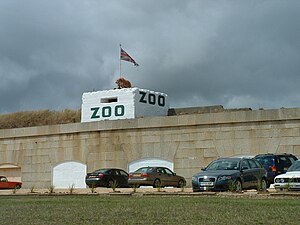
Bristol Zoo is a zoo in the city of Bristol in South West England. The zoo's stated mission is to "maintain and defend” biodiversity through breeding endangered species, conserving threatened species and habitats and promoting a wider understanding of the natural world".

Marwell Zoo is a 140-acre (57 ha) zoo situated in Colden Common near Winchester, in the English county of Hampshire. It is owned and run by the registered charity Marwell Wildlife. The zoo is home to 1,208 animals of 149 species. The charity undertakes a range of educational and conservation activities, with a particular focus on Africa in addition to work from its base.
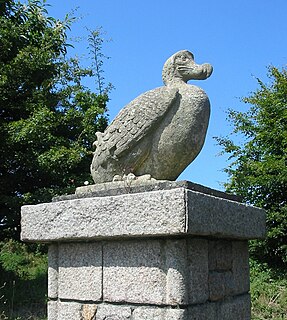
Jersey Zoo is a zoological park established in 1959 on the island of Jersey in the English Channel by naturalist and writer Gerald Durrell (1925–1995). It is operated by the Durrell Wildlife Conservation Trust. It has approximately 169,000 visitors per year; visitor numbers tend to vary with the tourist trade to Jersey.

Sandown is a seaside resort and civil parish on the south-east coast of the Isle of Wight, United Kingdom with the resort of Shanklin to the south and the settlement of Lake in between. Together with Shanklin, Sandown forms a built-up area of 21,374 inhabitants.

Twycross Zoo is a medium to large zoo near Norton Juxta Twycross, Leicestershire. The zoo has the largest collection of monkeys and apes in the Western World, and in 2006 re-launched itself as "Twycross Zoo – The World Primate Centre".

The Singapore Zoo, formerly known as the Singapore Zoological Gardens or Mandai Zoo, occupies 28 hectares on the margins of Upper Seletar Reservoir within Singapore's heavily forested central catchment area. The zoo was built at a cost of $9 million granted by the government of Singapore and opened on 27 June 1973. It is operated by Wildlife Reserves Singapore, who also manage the neighbouring Night Safari, River Safari and the Jurong Bird Park. There are about 315 species of animal in the zoo, of which some 16 percent are considered to be threatened species. The zoo attracts over 2 million visitors every year.

The Philadelphia Zoo, located in the Centennial District of Philadelphia, on the west bank of the Schuylkill River, was the first true zoo in the United States. It was chartered by the Commonwealth of Pennsylvania on March 21, 1859, but its opening was delayed by the Civil War until July 1, 1874. The zoo opened with 1,000 animals and an admission price of 25 cents. For a brief time, the zoo also housed animals brought over from safari on behalf of the Smithsonian Institution, which had not yet built the National Zoo.

Blackpool Zoo is a 32-acre (13 ha) zoo, owned by Parques Reunidos and located in the sea-side resort of Blackpool, Lancashire, England. It provides a home to over 1,350 animals from all over the world.

The Little Rock Zoo was founded in 1926 and is located in Little Rock, Arkansas, United States. It is home to more than 725 animals representing over 200 species, and covers an area of 33 acres (13 ha). The Arkansas Zoological Foundation is a private 501 c (3) organization that raises funds for zoo development. The Little Rock Zoo is a department of the city of Little Rock. It is the largest zoo in Arkansas, and the only Arkansas zoo accredited by the Association of Zoos and Aquariums (AZA).

Colchester Zoo is a zoological garden situated near Colchester, England. The zoo opened in 1963 and celebrated its 50th anniversary on 2 June 2013. It is home to many rare and endangered species, including big cats, primates and birds as well as many invertebrates and fish species.
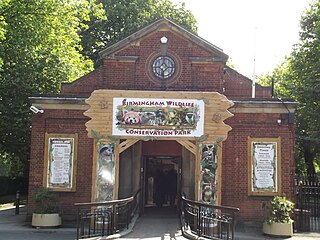
Birmingham Wildlife Conservation Park, formerly Birmingham Nature Centre, and before that Birmingham Zoo, is a small zoo on the edge of Cannon Hill Park in Birmingham, England. It is owned and managed by Birmingham City Council.
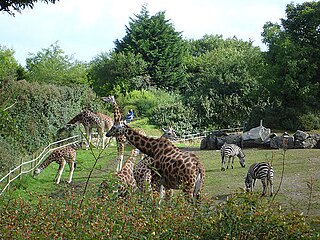
Belfast Zoological Gardens is a zoo in Belfast, Northern Ireland. It is located in a relatively secluded location on the northeastern slope of Cavehill, overlooking Belfast's Antrim Road, resulting in a uniquely tranquil environment for the animals that the zoo is frequently praised for.

The Edmonton Valley Zoo is a zoo located in Edmonton, Alberta's river valley. The Edmonton Valley Zoo is owned and operated by the City of Edmonton and is open 364 days a year, closing only on Christmas. The zoo is currently accredited by Canada's Accredited Zoos and Aquariums and is one of three accredited zoos in Alberta.

Paignton Zoo is a zoo in Paignton, Devon, England. The zoo is part of South West Environmental Parks Ltd which is owned by Wild Planet Trust, formerly known as the Whitley Wildlife Conservation Trust (WWCT). Wild Planet Trust also ran the now closed Living Coasts in Torquay, Devon. They also run Newquay Zoo in Newquay, Cornwall. All three are registered charities.
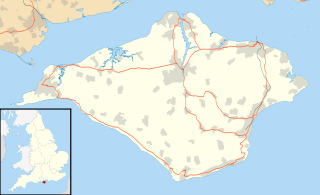
Yaverland is a village on the Isle of Wight, just north of Sandown on Sandown Bay. It has about 200 houses. About 1⁄3 of a mile away from the village is the Yaverland Manor and Church. Holotype fossils have been discovered here of Yaverlandia and a pterosaur, Caulkicephalus. The White Air extreme sports festival was held annually at Yaverland pay and display car park between 1997 and 2008, but moved to Brighton for 2009.

The Rare Species Conservation Centre (RSCC) was a conservation centre and zoological gardens situated just outside Sandwich in Kent, England, operated by The Rare Species Conservation Trust, a UK registered charity. Its purpose was to educate visitors and create awareness of the plight of some of the world’s lesser-known rare and endangered species of animal. It was home to rare and unusual animals. It closed due to lack of funds on 31 August 2015.
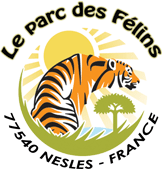
Parc des Félins is a zoological park in France dedicated to the breeding and conservation of wild members of the cat family. It is located in the commune of Lumigny-Nesles-Ormeaux in Seine-et-Marne, about 53.6 km (33.3 mi) southeast of Paris.
Metro Richmond Zoo is a privately owned, for-profit zoo in Chesterfield County, Virginia. It is located in the central Virginia area, on the western side of I-95. Metro Richmond Zoo encompasses about 70 acres (28 ha) and houses around 2,000 animals representing over 180 species, including reticulated giraffe, white rhinoceros, snow leopard, cheetah and Grant's zebra.

Banham Zoo is a 50-acre (20 ha) zoo in Banham, Norfolk, England. The zoo itself, which today is home to more than 2,000 animals, opened to the public in 1968, became a charity in 2013, and has since been often awarded the prize of Norfolk's Top Attraction, by numerous different organisations, with an annual visitor attendance of in excess of 200,000 people. It is part of the Zoological Society of East Anglia, a registered charity which also owns Africa Alive! near Lowestoft, Suffolk.

Wingham Wildlife Park is a medium-sized wildlife park situated near Wingham in Kent, UK where it covers an area of 26 acres. In 2011 the species count at the park reached 180 species, growing to over 200 in 2013 covering fish, mammals, reptiles, amphibians, invertebrates and birds.

